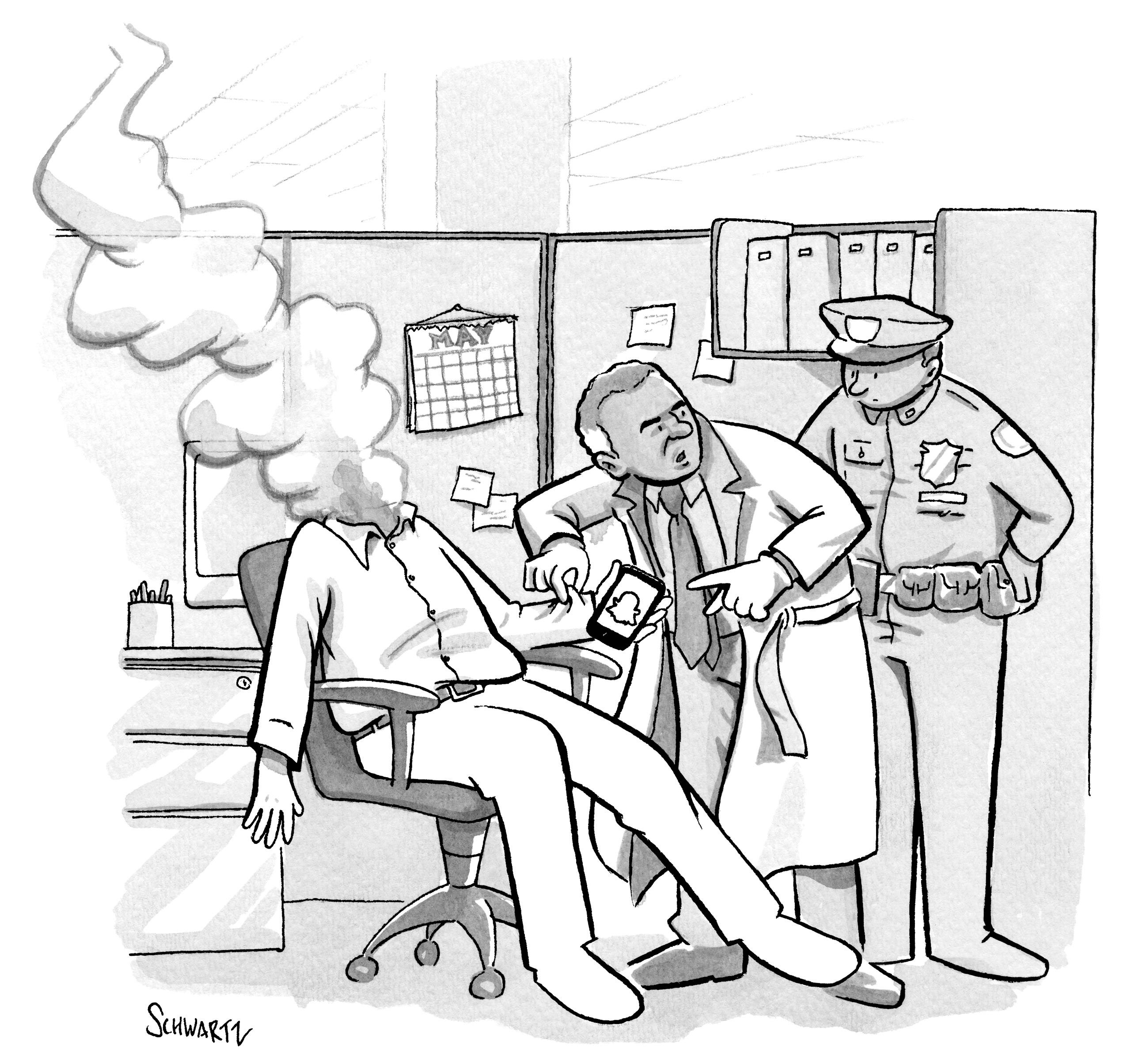Published January 25, 2019 | Updated March 22, 2023 | 8 minute read
I was born in 1986, and thus am one of the oldest Millennials. I graduated into a recession, and have found myself bouncing around large organizations who think Millennials are ungrateful ping-pong addicts who just need to shut up and knuckle down.
My experience of large organizations has been unimpressive. I’m not alone, and thus we’ve seen plummeting engagement rates amongst U.S. employees. Large organizations weren’t built for Millennials, and we didn’t want to change for them. These organizations have had 20 years to figure out what we need, and while the Netflix’ and Googles of the world are granting flexible working hours and an unprecedented level of autonomy, it may be too late for Millennials: a new generation is about to arrive on the jobs boards.
My brother Casey was born in 1997, a full 10 years after me. Like me, he is one of the oldest of his sociological strata and he is just about to graduate and start looking for work. Living in different timezones makes communication between us tricky enough, but the fact that WhatsApp, Gmail and Facebook (my standard messaging platforms) seem antiquated to him only exacerbates this. I’ve discovered that he responds to me sending Snaps (“Snapchats”?), although why a photo or video featuring me wearing dog ears is a better way to communicate than SMS, I will never know.
Casey is staying with me in NYC through the summer and has started looking for internships. So far, his entire career has consisted of a summer as a barista and a short spell fixing broken iPhones and flipping them on eBay (there’s that Gen Z entrepreneurial streak). I’m enjoying being able to talk to him without having to record myself wearing dog ears, but also finding out more about his world and what he expects to find from a career at modern organizations. As an organizational design consultant, I’m interested to know whether these organizations ready to support the needs of him and his peers.

My brother is so Gen Z, he doesn’t even disconnect for photos ops.
Here’s what I know about Generation Z already, and how it maps onto the organizations of today. Caveat: I’m no sociologist.
Multi-tasking
Second-screening? That’s adults-play. Gen Z are able to monitor inputs from an incredible amount of sources all at once. This is a learned skill, but not one that has been practiced consciously. Rather, it is a symptom of the tech we live with today. It is also cyclical: inputs from five places lead to outputs to many places, which leads to responses from those places, etc.
This ability is reflected in attitudes to the divisive workplace chat app Slack. In a recent organization I was a part of, I noticed that one’s ability or willingness to use Slack is directly proportional to one’s age. (The divide actually fell rather neatly at the age gap between the oldest Millennials, and the youngest Gen Xers, somewhere around age 35). Some of the most senior members of the team (at least everyone above 40) simply refused to use Slack, claiming there was too much information to keep up with. Meanwhile, the youngest members of the team spent their whole day swapping gifs and emojis, and even making their own to add to the common language.
It is true of Slack that it can be overwhelming, but today’s graduates are so accustomed to a constant influx of information, that I believe that they can deal with this overload without really considering it. The more important thing is that the experience of using the app is fun.

“Looks like another case of someone over forty trying to understand Snapchat.” — from The New Yorker
This idea also reflected in Snapchat, which I find not “naturally intuitive” to use (read: I have no idea what I’m doing). It is however, a lot of fun. Much more fun for communicating than something like WhatsApp. Trello is another example of software that has been carefully built around fun: images, gifs, stickers and a small cartoon dog all create engagement among my company’s client teams in a way that I haven’t seem them respond to kanban boards on Asana, Microsoft Planner or Jira.
If the tech stack of your company doesn’t account for the tastes of the emergent Generation Z, how can it hope to engage them on their level and retain their interest in the work and the team in which they operate? Your organization may not appreciate that not only are they able to understand inputs from many sources at once, this is actually how they are accustomed to receiving information. If your tech stack has been normalized for the abilities of the generation occupying the top of the hierarchy, those just now entering the company may feel underwhelmed and confused by technology that doesn’t integrate into their lifestyle.
Hyperawareness
Because of the massive stream of information that comes from so many sources at all times, Gen Z graduates are hyper-aware of their surroundings, of trends and of gossip. They are accustomed to having all of the information and being able to react, comment on and make decisions regarding it.
This is at odds with the traditional operating model for organizations which keeps information closed, on a need-to-know basis only. This operating model worked really well for a really long period of time, when information moved slowly and the industrial landscape didn’t change too often. This is no longer the case, and the time spent doing air-traffic control on information is wasteful in itself and wasteful in that it requires employees to have to ask and seek out information that they need to do their job.
At my consultancy August, we believe that a team’s ability to learn and adapt quickly depends on its access to relevant information. This is why all information about the company is available to all team members, including cashflow and compensation (a lot of it is also available on our public Google drive). All of our team members are able to make business decisions autonomously because they have all the financial information that they need immediately at hand. This makes us agile (in that we do not need to go through an approvals process or up the chain-of-command in order to make a decision and act on it) and, speaking from experience, also hugely increases engagement of the organization’s employees in its operations.
The transparency that makes for learning organizations is well suited to the Gen Z graduates ability to synthesize information from several areas at once. It also ensures that they don’t become confused or frustrated at having avenues of information closed off them. The process of obtaining that information, or arguing for why they need it will slow down their ability to complete a project, which leads nicely to another Gen Z attribute….
Low tolerance for things taking too long
Ask yourself, how long is an acceptable time for a web page to load? To test this, go open a new tab and type “facebook.com” in the search bar and then wait staring at the page as long as you can before you start getting bored and frustrated and become fully cognizent of the futility of life. If you’re anywhere between 25 and 35, it’s probably around 12 seconds, right?
For your typical member of Gen Z, it’s closer to 8. As a result of this phenomenon, companies such as Buzzfeed have invested heavily in rewriting their back-end website architecture (without touching the cosmetics of the user facing site) because that a few seconds less load time has huge value in user retention.
Likewise, anyone who has worked in an office can empathize with the crushing realization that things take FOREVER. While we may not expect results in 12 seconds or less, there is only so much tolerance we can have for seeing an idea or project languish in committees and meetings. For Gen Z, this feeling is exacerbated by their being accustomed to immediacy in everything they do. They may become completely disillusioned by a three month approval process, or stakeholders unwilling to sacrifice perfection to achieve progress.
Modern organizations are adopting a prototyping approach to project delivery that sees a team’s hard work go live iteratively and incrementally at frequent intervals. Even if it doesn’t go live to the public, a weekly delivery to stakeholders of all work done (whether fully completed or not) has value in getting constant feedback and course-correcting as necessary. Just the knowledge that someone somewhere cares about how you’ve spent 40 hours this week and has some feedback on it will be hugely motivational and keep a Gen Z-ers attention away from Snapchat for a few hours longer.
Cultural diversity
Generation Z have “come of age when same-sex marriage and a black president are a given and they expect continued social progress to reflect the ethnic diversity that is tightly woven throughout their lives.” The vast amount of information that they consume daily comes from global cultures representing a huge range of socio-economic groups. Without leaving their dorm rooms, they are exposed to a huge variety of real experiences across the world via Facebook Live, Periscope and the rest.
There are a myriad of reasons to hire for, and respect, diversity in the workplace that are already well documented. For Generation Z, there is an additional factor to consider: working with a homogenous group of colleagues will not reflect a Gen Z-ers everyday encounters outside of work. This will create a disjointed experience, and they are much more likely to question and become suspicious of this experience than previous generations might.
Political and Social Activism
It doesn’t take Pepsi’s in-house marketing team, or a cold text from a fake nipple company, to figure out that social justice is a huge part of the world in which Gen Z are graduating. While volunteer days and CSR programs at major corporations are well-established and effective, modern organizations are doing much more to respect the volatile political landscape with which Gen Z-ers are engaged.
For example, giving election day as a paid holiday to encourage employees to vote is a perk offered by legacy orgs such as General Motors and modern tech companies like Spotify and Square. Patagonia, in direct alignment with their goals and mission, financially assist employees who are actively participating in social justice movements.
True! We bail out employees arrested during peaceful protests if they complete activist training w/The Ruckus Society.
— Patagonia (@patagonia) September 15, 2016
As Forbes put it: “Connecting their jobs to social impact will remain a priority for Generation Z, and employee volunteer and giving programs will continue to be creative tools for strengthening teams, skills and leadership.”
At August, we’re creating transformative movements within the organizations that we work with, working with in-house change agents to understand how to create massive shifts in mindset across companies consisting of tens of thousands of employees. We hope that in doing so, we can create the conditions that will spread those movements beyond the organization itself and into the wider world. We hope that adaptive, learning organizations can teach people how to create opportunities for positive change within not just their working lives, but their personal lives too.
Always-On
At the company I worked at before August, the words “Always On” were written in huge letters in the lobby of our office. If this is the promise to customers, and the expectation of employees, then the structure of an organization must make allowances for more coherent integration of their employees personal and professional lives. What you believe and experience outside of work must be respected and unified with your working life. For Generation Z, the expectations for this, and resistance to alternatives are higher than ever.


.jpg)






